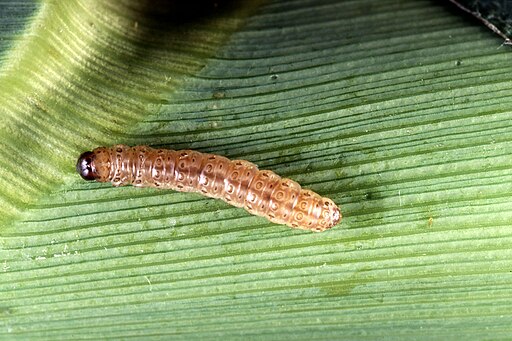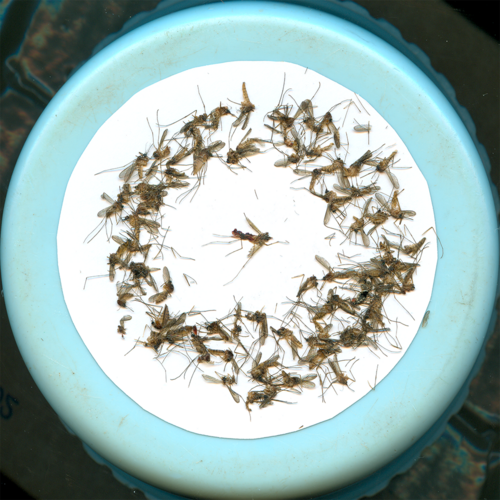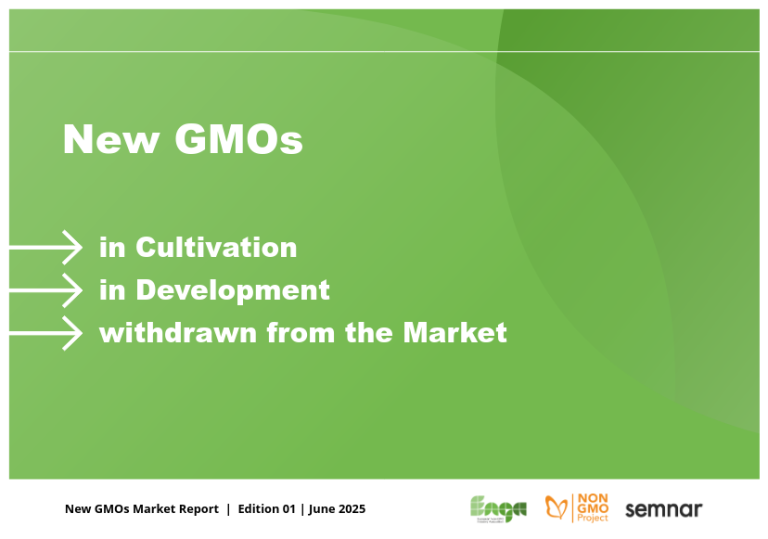News
In Spain, are some insects beginning to resist GM maize?
For almost 15 years, European and French experts have been recommending that Bayer improve environmental monitoring of commercial Mon810 corn crops in Spain and Portugal. This improvement is necessary, they say, to prevent target insects such as the European corn borer and sesamia from developing resistance to the insecticide produced by this transgenic corn. But year after year, Bayer only partially responds to these requests. Yet concerns are becoming increasingly serious and concrete, as demonstrated by the latest EFSA opinion, published in August 2024.

Mon810 transgenic maize, genetically modified to produce a Cry insecticidal protein, has been approved for cultivation in Europe since 1998. Since 2010, these crops have been monitored for any environmental impacts that may have been overlooked in the risk assessment. First Monsanto, then Bayer since the takeover of Monsanto, sends its annual report, which then passes into the hands of the experts. These reports give an account of the establishment of buffer zones around transgenic crops, as well as the general monitoring carried out to detect any unanticipated impacts. Since 2010, European experts have been repeatedly calling for improvements, but these have never been entirely implemented by the companyi. The opinion of the EFSA, like the one of the Ansesii, on the report concerning cultivation of 2022 in the only two countries where this maize is still grown, Spain and Portugal, is no exception to this rule.
Refuge zones respected, on paper
It is mainly on the basis of data supplied by Bayer that the European experts are attempting to assess the impact of Mon810 transgenic maize crops. They have also taken into account a scientific article on the appearance of teosinte in Spainiii.
The European expertsiv note that the refuge zones to be set up around or in Mon810 maize crops appear to have been better respected in Spain than in previous years. In detail, it should be noted that monitoring on this point is carried out via a questionnaire drawn up by Bayer asking farmers whether they have complied with the obligations to have refuge zones. Above all, the EFSA points out that Bayer only questioned Spanish farmers, but should have questioned Portuguese ones too. It recommends more extensive monitoring in the coming years, a surveillance to be carried out by Bayer as it is already the case today.
The beginning of resistance in insects
In their report, the experts do not state with certainty that resistance has been acquired by the European corn borer and the Mediteranean corn borer (sesamia), both targets of the Cry transgenic insecticide protein in Mon810. However, certain informations alert them to a potential onset of resistance. This concern dates back to 2015 and the first findings of methodological flaws in monitoringv. In 2024, the experts noted that in northeastern Spain, “a decrease in Cry1Ab susceptibility in Mediterranean corn borer populations from this area cannot be excluded”. This finding is reinforced by the observation in the field of “unexpected damage by (sesamia) to maize MON 810 reported in 2021 in Girona”, which the experts had mentioned in their report on 2021 crops. While EFSA welcomes the fact that this region is now included in the geographical area monitored, it nevertheless considers that the monitoring carried out by Bayer is insufficient.
Indeed, the experts detail that “Monitoring activities should not be limited to the sampling of (sesamia) populations from conventional maize fields in Girona. They should include the development and implementation of a protocol to collect (sesamia) populations close to the field where unexpected damage was reported”. Bayer should also do more to search for any resistant sesamia in the area concerned. The experts also ask Bayer to warn local farmers of this possible presence of resistance, so that they inspect their fields more regularly.
More astonishingly, the European experts write that none of the measures taken by Bayer, following the observation of damage to Mon810 maize plants and the potential presence of sesamia resistant to the transgenic Cry insecticide protein, were designed to reduce the spread of this resistance. Bayer considered that there was no need to reduce the spread of this resistance because, according to the company, the resistance did not concern an entire population and the neighboring fields had already been harvested… This approach is not in line with that of the EFSA, which considers that the measures to be taken should include stopping the sale and cultivation of Mon810 maize in the region when resistance evolves, increasing communication with farmers, implementing different control measures and increasing the size of refuge areas. They conclude their report on this point by explaining that they “welcome the consideration by the consent holder of these recommendations”. The report of cultivation in 2023 to be analyzed by the EFSA next year will detail the actual measures taken to effectively study and try to curb the emergence of this resistance in insects.
Potential problems with transgenic teosinte contamination
Based on the opinions of European and French experts published in 2021, Inf’OGM explained at the beginning of 2024 that potential agronomic problems linked to Mon810 corn crops were likely to arise. These agronomic problems concern teosinte, an ancestor of corn of Mexican origin, which is increasingly present in Europe. Found in particular in fields of transgenic Mon810 maize, these teosinte require, for the experts, more precise monitoring “to avoid losing control over the spread of insecticidal proteins produced by this maize”vi. Indeed, the primary risk is the possible hybridization of Mon810 maize plants with teosinte plants, the latter acquiring the transgene from Bayer’s maize. This would lead to an uncontrolled increase in the number of plants producing the insecticide protein, and thus the risk of insects developing resistance to it. A situation which could become all the more problematic given that in 2023, in response to the experts, Bayer/Monsanto had explained that it was opposed to reinforcing this monitoring!
One year later, the European experts note in their opinion that the situation is still… problematic! They had asked that the questions sent to farmers be supplemented by questions on the possible presence of teosinte, that a bibliographical review of scientific articles be carried out, that information from Bayer and the Spanish authorities be passed on regarding teosinte sightings, and that monitoring activities be stepped up. Unfortunately, the experts wrote in this year’s report that “no specific information on the occurrence of teosinte (…) was collected with the farmer questionnaire”, because Bayer had simply not modified it. Likewise, bibliographical research is considered to be lacking. As for the work of the Spanish authorities, the experts note that their analysis indicates the presence of teosinte only in conventional maize fields, and an absence of hybridization between plants. But with the information received, the experts are not in a position to know whether the monitoring protocols followed have been sufficiently effective to be reliable. Politely, the European experts “encourages that the research/monitoring activities pertaining to teosinte be continued and expanded”. All of these are comments that the experts will no longer have the opportunity to make in the case of GMOs that will be deregulated if the European Commission succeeds in its project initiated in 2023. This is because, in this deregulation of the majority of GMOs, environmental monitoring and prior risk assessment would no longer be carried out.
i Eric Meunier, « Europe – Surveillance post-commercialisation : mal menée », Inf’OGM, le journal, n°150, May/June 2018 (in french).
ii Anses, « NOTE d’appui scientifique et technique du Groupe de travail (GT) « Biotechnologie » de l’Anses relative à la demande de commentaires sur le rapport annuel (2022) de surveillance environnementale de la culture du maïs génétiquement modifié MON810 en Espagne et au Portugal », 27 December 2023.
iii Arias-Martín, M., Escorial Bonet, M. C., & Loureiro Beldarraín, I., « Teosinte introduced into Spain and Bt maize: Hybridisation rate, phenology andCry1Ab toxin quantification in the hybrids », Revista de Ciências Agrárias, 47(1), 297–301, 2024.
iv EFSA, « Assessment of the 2022 post‐market environmental monitoring report on the cultivation of genetically modified maize MON 810 in the EU », 22 August 2024.
v Eric Meunier, « UE – Maïs MON810 : des pyrales résistantes peut-être déjà là », Inf’OGM, 3 juillet 2015 (in french).
vi Eric Meunier, « Problems ahead due to cultivation of GMO maize in Europe? », Inf’OGM, 6 February 2024.












